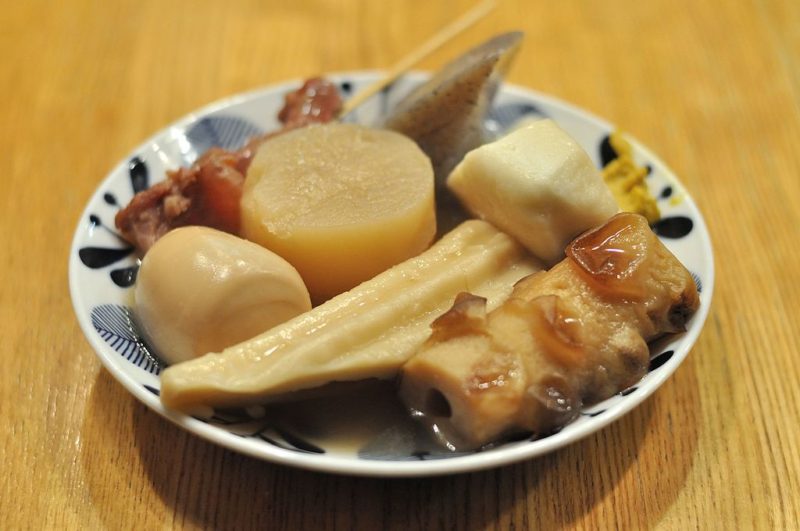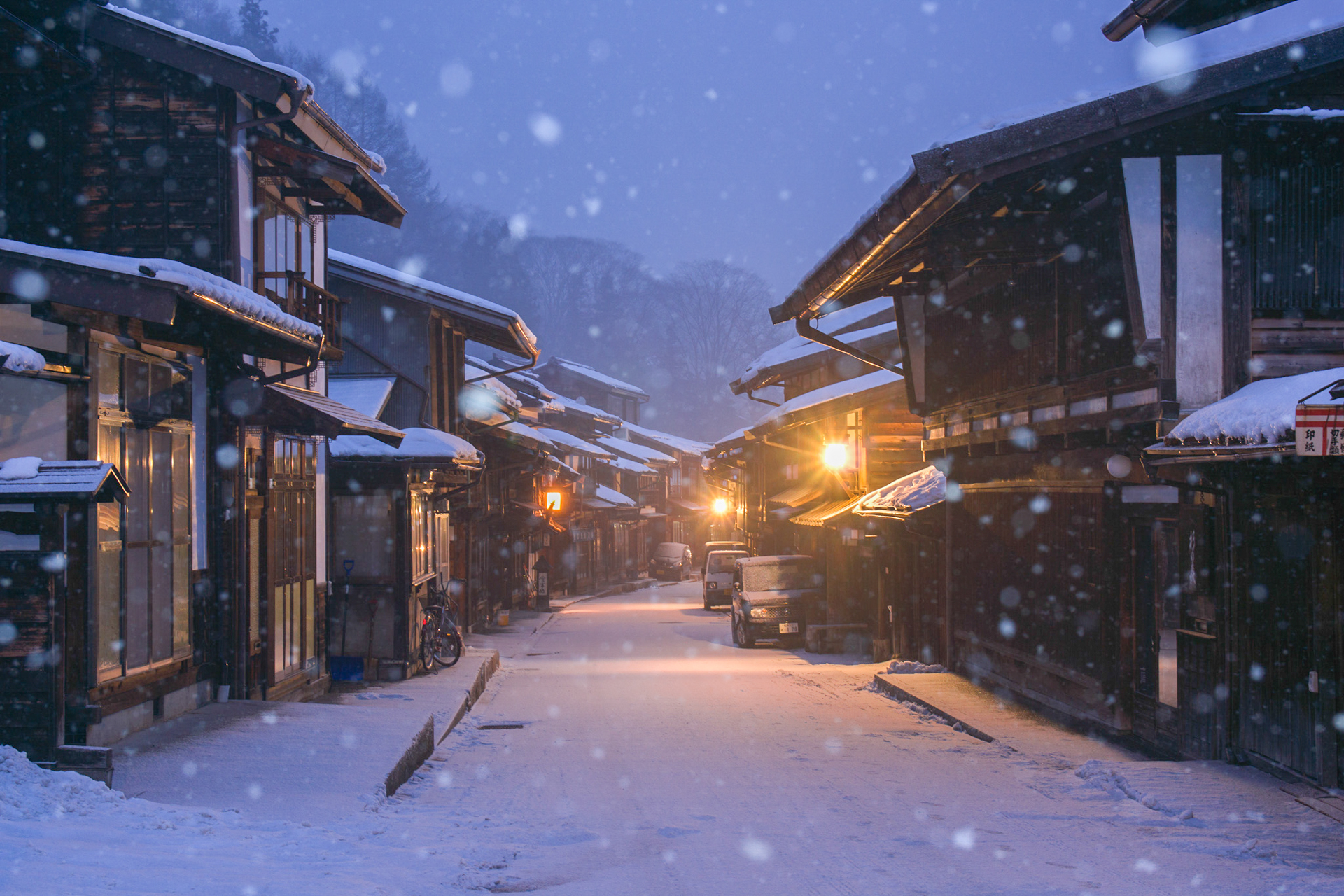Dec 27, 2022
Winter Food in Nagoya
Unless you are a ski bunny or a masochist, there should be no doubt that winter is the worst of all months. Cold and wet, skies as ashen as the faces that wander the sun-starved streets, it is a miserable time; it is with good reason that the poet Christina Rosetti never penned ‘In the Bleak Mid-Summer.’ And yet, for many Japanese, this is their favorite season. It seems like madness.
Unsurprisingly, if you know anything about Japanese culture, you’ll see why this is: food. Healthy, warming, and for the most part so hearty it could power steamships, winter food is something that many Japanese look forward to all year round, and with good reason. As it just so happens, in Nagoya, there are loads of places to get stuffed full of winter cheer, so put on your hat, coat and scarf, and indulge in the best seasonal food this fair city offers.
Nabe (Hot-pot)
Thanks to a lack of insulation coming as standard, Japanese homes get mighty chilly in winter, so any food around which the family can cozy up is a godsend. By quite some distance, the most popular winter dish is a hotpot style dish called nabe or nabemono [lit. Things in a pot]. The nabe itself is the large cooking pot, into which ingredients such as fish, seafood, meat, and vegetables are simmered in dashi [broth] on a gas stove around which the family gathers, taking from the dish and adding more as they go. There are seemingly infinite types of nabe, but some of the most popular are motsunabe, which uses beef or pork with cabbage and chives; kimchi nabe, which utilizes the Korean spicy fermented cabbage, or yosenabe with meat, seafood, vegetables, tofu, and egg.

Nabe in Nagoya – Akakara
If you are looking for a cheap and cheerful nabe – and really, there should be no other kind if you want to stay in the spirit of things – Akakara is a great bet, preferably if you want some spice to warm you up. Their special winter hotpot is stuffed fill of meatballs, pork belly, tofu, chives, and much, much more, and it is pretty healthy at just 530 kcal per serving. The name Akakara translates as ‘red and spicy,’ and you can choose from an umami-packed level zero up to a fiery eleven.
Where: All over Nagoya. See the website for details of your nearest. (map)
Website: akakara-portal.com
Shabu-shabu
Similar to nabe, shabu-shabu is cooked in a large pot over a communal gas stove with ingredients such as vegetables, seafood, and, most commonly, thin strips of pork. However, shabu-shabu differs because the meat is cooked individually by stirring it through the dashi, giving it its onomatopoeic name as it swishes one way – shabu – and another – shabu. Once cooked through, the meat is dipped in a refreshing ponzu vinegar, eaten, and the process is repeated. Lovely stuff!

Shabu-shabu in Nagoya – Kisoji
In the heart of Sakae’s pulsating Nishiki district, Kisoji is the first word in Nagoya’s shabu-shabu dining. With private rooms for four people and more, it is an excellent choice for your company or friend shinnenkai [year beginning party], and they even put on a shuttle bus for large groups. Of particular renown is Kisoji’s signature shabu-shabu, which comes with marbled wagyu beef and their secret sesame sauce.
Where: All around Nagoya, but the Nishiki branch is recommended: 3 Chome-20-15 Nishiki, Naka Ward, Nagoya (map)
Website: kisoji.co.jp
Oden
Keeping on the warm and hearty vibe, oden is very much a winter favorite, and you find it everywhere. Often sold by street vendors, its base is a soy and bonito broth, with all manner of ingredients such as tofu, konnyaku yam cake, egg, daikon radish, and chikawa fish cake are stewed for hours. There is a good chance you noticed it simmering away in convenience stores, but if the smell has put you off, rest assured that the conbini oden is not a patch on the real thing.

Oden in Nagoya – Kamoshiya
Very much a case in point, Kamoshiya, along Hisaya Odori, is a far cry from Family Mart. The brainchild of a wine sommelier with a deep knowledge of French cuisine and wine bars, it serves up red miso oden, giving it a distinctly Nagoyan flavor. The concept is a little more upmarket than your regular oden-ya, is popular with foreigners, and prides itself on being a safe space for women dining alone to enjoy their meal in peace, should they wish.
Where: Nagoya, Naka Ward, Nishiki, 3 Chome−16−8 Moriman Building 1F (map)
Website: kamoshiya.jp
Nikuman
Do you remember back in the day when those Game of Thrones memes were going around? It usually had Sean Bean looking wistfully, and beneath it said, ‘Winter is coming.’ In Japan, those memes said, ‘The nikuman is in the shops. Winter is coming”. That shows you just how much these steamed pork buns are a part of Japan’s winter landscape. The Japanese take on the Chinese baozi, nikuman, is a steamed flour bun usually filled with juicy pork, though other flavors such as curry and cheese, gyoza, and pizza sauce are available.

Nikuman in Nagoya – Nikuman Seirouken
Yes, you can pick up nikuman at any old conbini, but if you want the good stuff, head to Nikuman Seirouken in Chikusa. Using rich and meaty Awaji beef, the specialty nikuman is sweet and packed full of umami. If you want something a little less meaty, try the cabbage-man, as it contains the same beef and lots of healthy cabbage, too.
Where: Nagoya, Chikusa Ward, Kyomei, 1 Chome−9−9 Wing CK Building 1F (map)
Website: nikumann-seirouken.owst.jp
Fugu
Due to it being freshest when the coldest waters arrive, fugu [blowfish] is one of many seafood treats that comes into its own in the winter season. Famous in the west for being a deadly delicacy – the liver can be poisonous if not handled correctly by experienced chefs – fugu is so delicious, whether it be in a raw sashimi form, deep fried, or in a nabe pot, that it is recommended that you overcome your fears and give it a try. Just don’t prepare it yourself!

Fugu in Nagoya – Fugu Restaurant Mifune
Not only is Fugu Restaurant Mifune serious about pufferfish, but they also grow their own organic vegetables on a family-owned plot of land, so you know they are all about quality. Located a few minute’s walk from Fujigaoka station, Mifune has private rooms available, and the staff pride themselves on their relaxed customer service – you won’t have a waitress popping up every two minutes to ask how your meal is going here – so you can enjoy your fugu experience at your own pace.
Where: 142-2 Fujigaoka, Meito Ward (map)
Website: mifune-fujigaoka.owst.jp
Crab
Like fugu, crab is a dish best served when it’s cold out. The best crabs are the giant ones from Hokkaido; though it can be pretty pricy, many places also serve Russian crab, which is a little kinder to the wallet. Also, like fugu, the crab can come as sashimi or in a nabe, but it is much more fun when it is lightly cooked and you have to crack open the shell.

Crab in Nagoya – Sapporo Kanihonke
Though called Sapporo Kanihonke, this crab restaurant chain is Aichi born and bred. You’ve probably seen them around, with their animatronic crabs moving on the sides of their buildings. While that looks kind of kitsch – the interiors are too, with Edo-era themed rooms, huge aquarium tanks, and even boats, all designed by the nonagenarian owner – the crab is top-notch. With both extravagant dishes and those more wallet-friendly, their specialty is their crab pot, with their semi-secret broth made of crab stock with tuna flakes and rausu-konbu seaweed.
Where: All around the Chubu area. See the website for your nearest. (locations)
Website: kani-honke.co.jp
Image: By OiMax via flickr.com [CC BY 2.0]
Image: By calltheambulance via flickr.com [CC BY 2.0]
Ocdp, CC0, via Wikimedia Commons
Image: via https://nikumann-seirouken.owst.jp/
Image: by rc! via flickr.com [CC BY-NC 2.0] – modified
Image: By Rie Ono via flickr.com [CC BY 2.0]


About the author